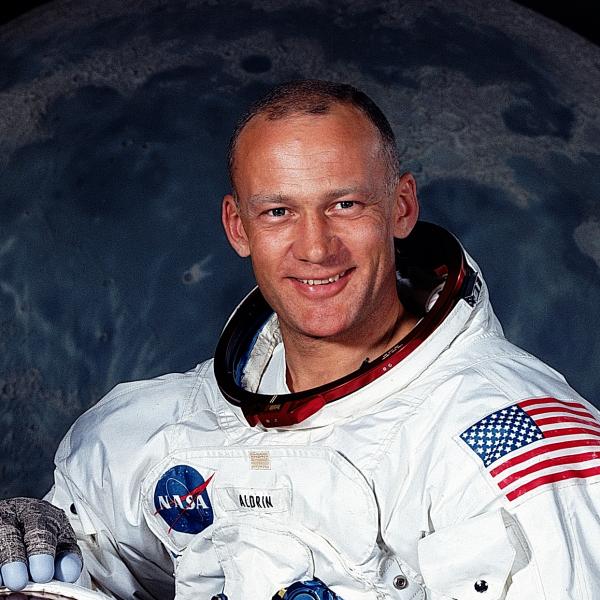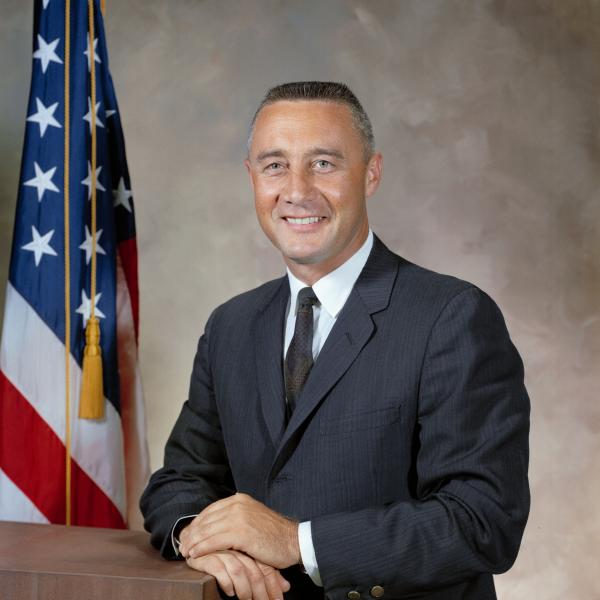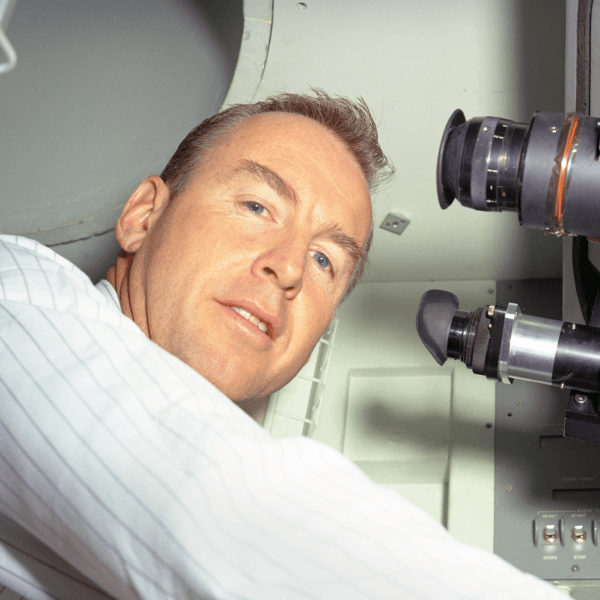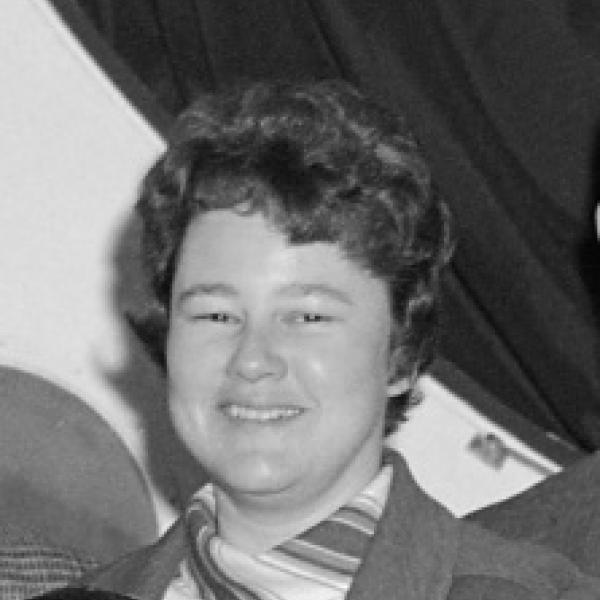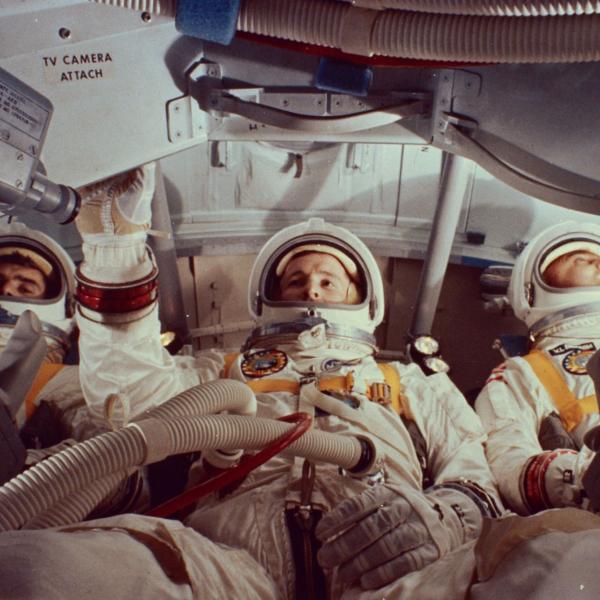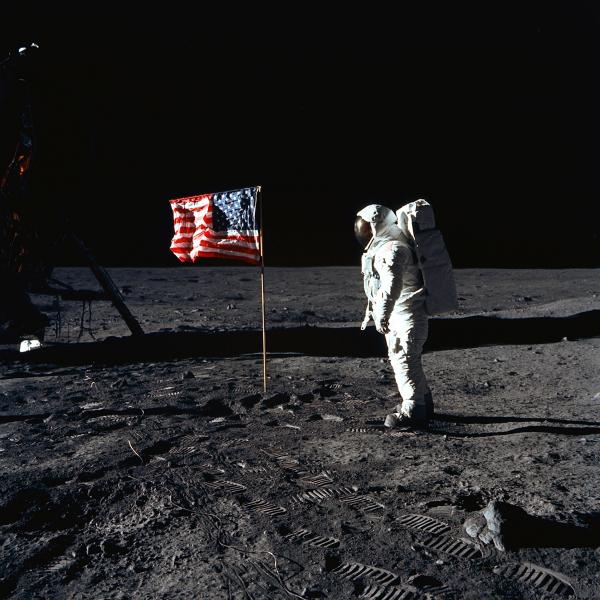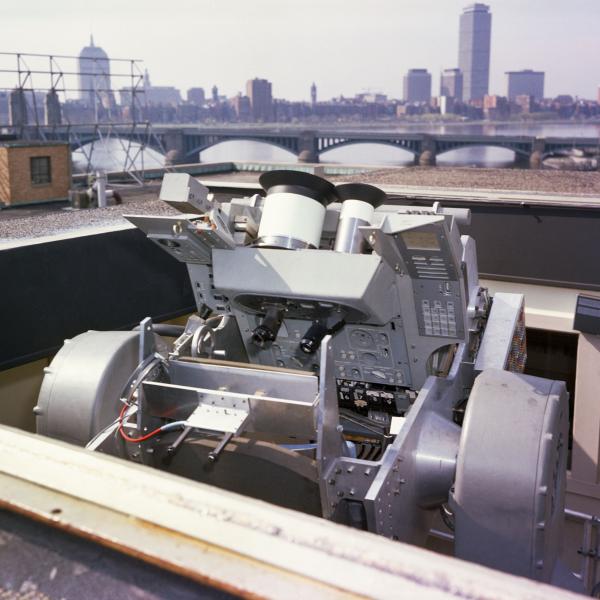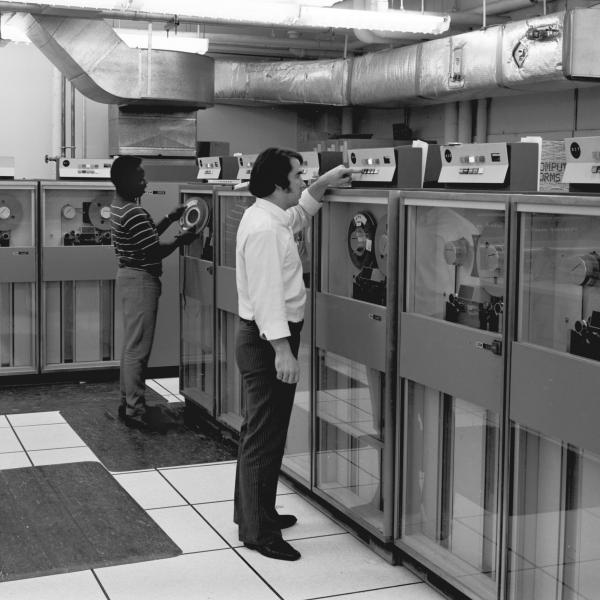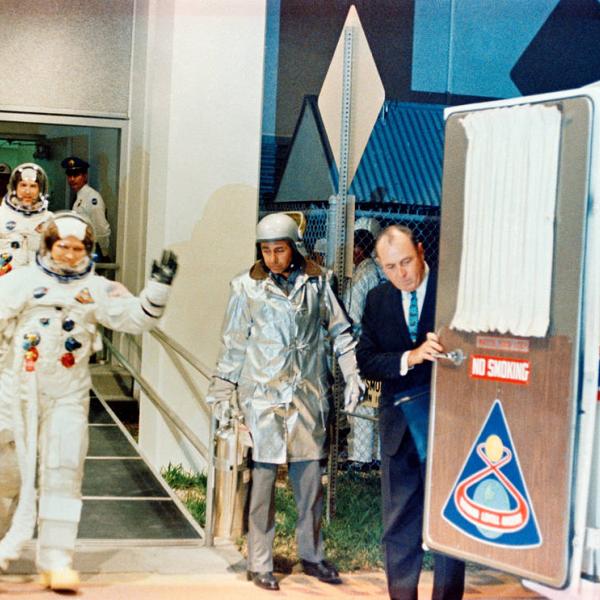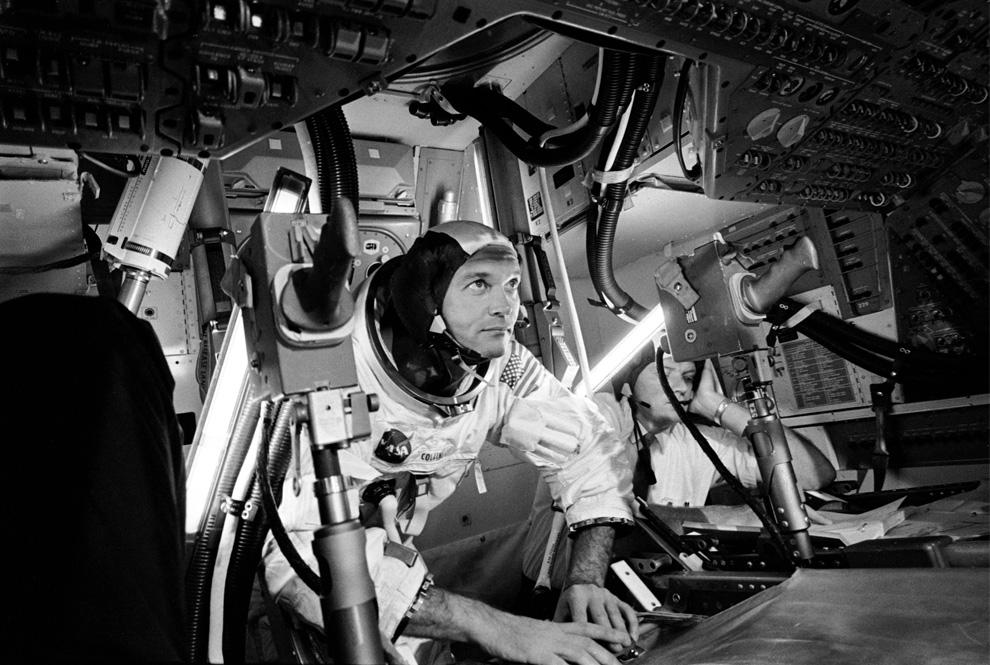
How Draper Trained the Astronauts
When the Astronauts Landed in Cambridge...
Soon after the Apollo Project became a reality, Charles Stark Draper was so certain that the inertial navigation technology his lab had invented would be the key to landing the first man on the moon, that he offered his services as an astronaut for the mission. Although he obviously didn't make the cut, the MIT Instrumentation Lab was awarded two important tasks. The first was to design the guidance and navigation system (the Apollo Guidance Computer) that would help guide the Apollo missions safely to and from the Moon.
The second was to train the astronauts who would be using the revolutionary new computer to get there. The Apollo astronauts were all flyboys, test pilots used to manually flying airplanes. Many of the famous astronauts like John Glenn, Jim Lovell and Buzz Aldrin graced the halls of MIT for training. Putting their trust into a revolutionary digital flight computer was new ground, so getting first hand training from the very engineers who built the developed the system was crucial. To this end, the Instrumentation Lab built a variety of simulators at the Cambridge Lab with the help Tom Fitzgibbon and his team. Lance Drane was among the engineers who helped design the simulation software from the ground up - ensuring they took into consideration how gravity would affect the spacecraft as it neared the Moon.
The computer science engineers didn't just have to write the software to run the tests. When it came to the bulkiness of the astronaut’s space suits, they had to figure out how the astronauts could flip switches and key in codes. The DSKY Keyboard was a result of this. Possibly the world’s first keyboard, It featured large buttons that would allow astronauts to key in commands with their thick gloves and not worry about pressing the wrong key accidentally.
Among other technologies for the Apollo missions, the Instrumentation Lab team developed a space sextant that would allow the astronauts to record measurements. They trained in realistic simulators such as the hybrid simulator and rooftop navigator on the roof of Draper's lab. These would ensure that the Apollo Guidance Computer could better align itself mid-flight and have a better chance of both landing safely and where they intended.
The astronauts went through rigorous testing, much of which resulted in frequent visits to Cambridge. But all their training was important—the trust they built with the engineers was paramount to many decisions made in mid-flight crises. When the Apollo 11 alarms caused panic, it was the simulation and the engineers in the Instrumentation Lab who had the solution, and the astronauts followed.
Malcolm Johnston, a systems engineer at the lab recalled. "I was a bachelor so I got to spend a lot of time with them. The astronauts would rather go out with me at night than to go home with some guy to have dinner with his wife and six kids. And I ended up closer to them as a result of that.“ Johnston also played squash with them, laughed with them, went to dinner with them.
Growing close to the astronauts also reminded the Instrumentation Lab engineers of the reality of the Apollo missions. Their work mattered so much more, because human lives were involved. The astronauts were active participants in the flight; they did not have the autopilot we have today. The astronauts ate lunch with the engineers; they talked about their lives and their families together, in a camaraderie that likely wasn’t found in any other relationship between NASA and the space engineers who put the first man on the moon.
